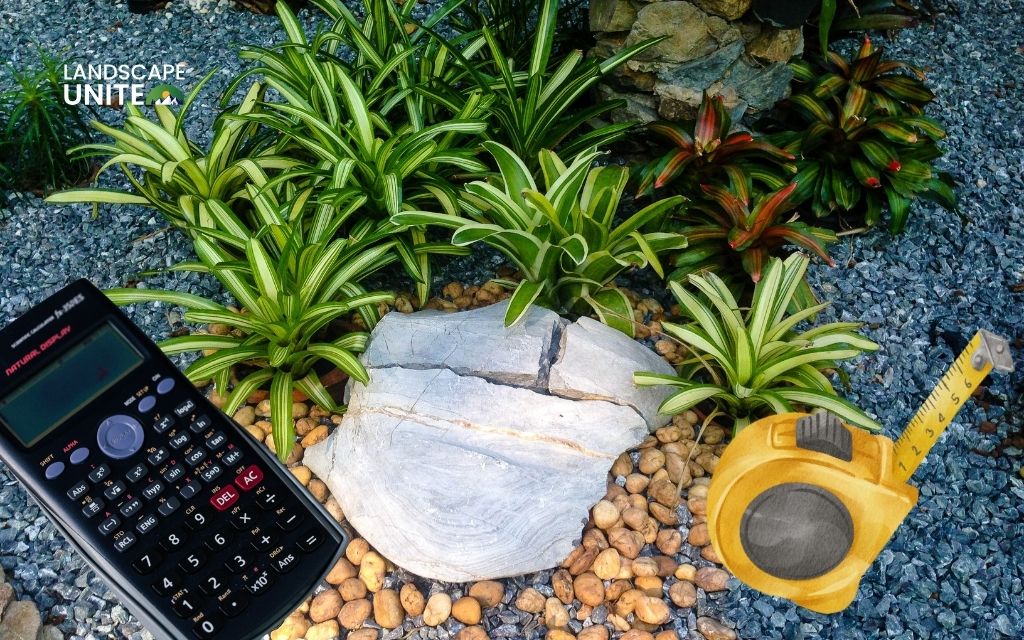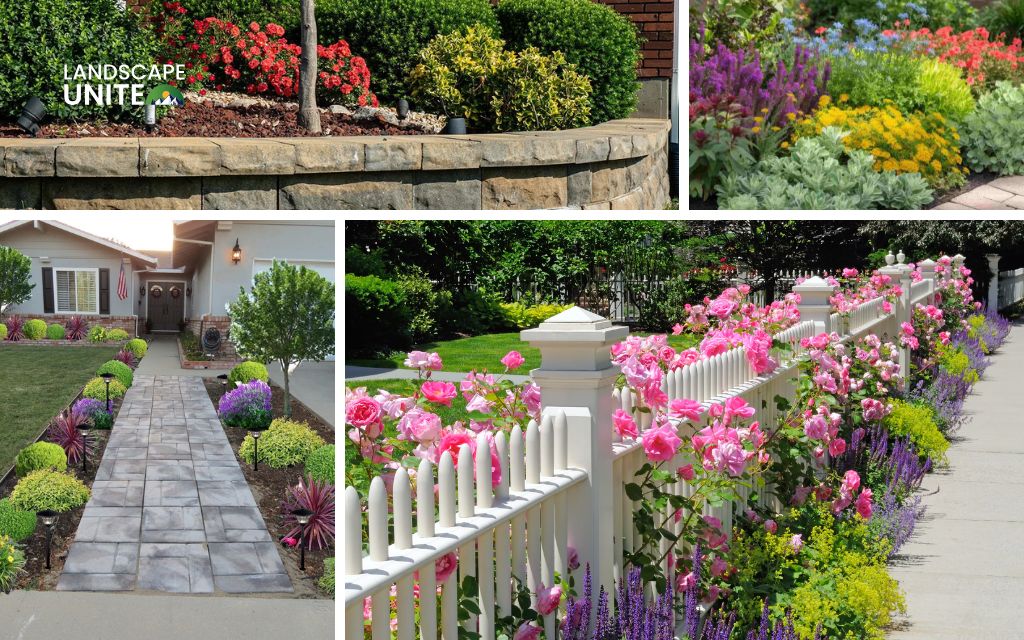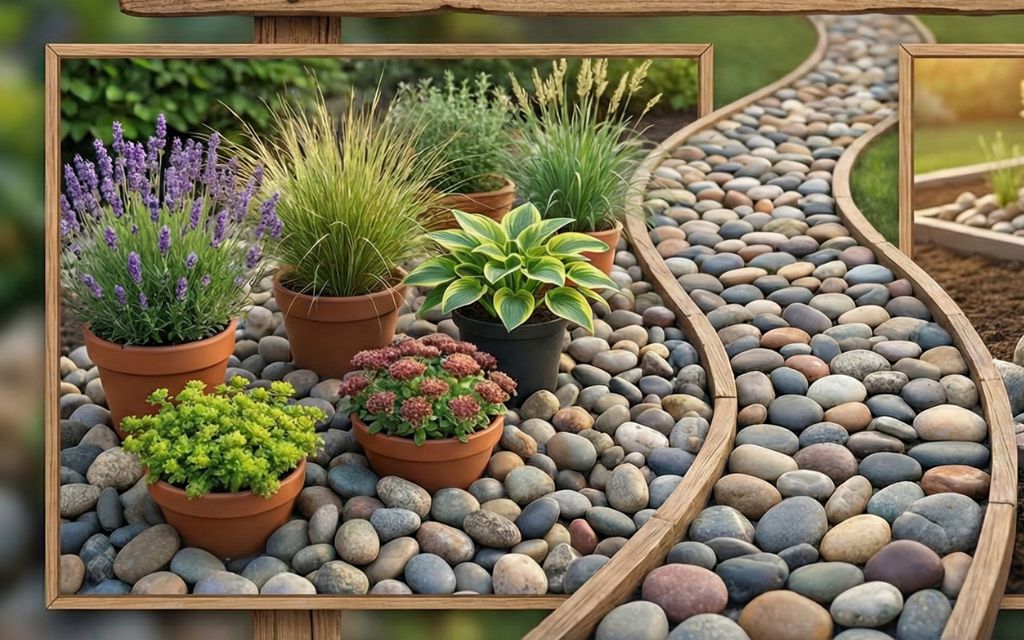Have you ever walked past a garden and stopped in your tracks because of the stunning blooms and intoxicating fragrance? That’s the magic lilies bring to any landscape. These elegant flowers, belonging to the genus Lilium with over 100 species, offer more than just beauty. They give you endless possibilities to transform your outdoor space into something truly special.
Whether you’re planning your first flower bed or reimagining your entire landscape, lily garden ideas can help you create displays that neighbors will admire and you’ll love tending. From the cheerful simplicity of Asiatic varieties to the dramatic presence of Oriental lilies, these perennial favorites deliver stunning blooms season after season with surprisingly little fuss.
What makes lilies so appealing? They’re versatile enough for cottage gardens and modern landscapes alike. They work beautifully in borders, containers, and even woodland settings. Plus, with proper planning, you can enjoy continuous blooms from early summer through fall.
In this guide, you’ll discover practical lily garden ideas that work for real gardens, learn which varieties thrive in different conditions, and master companion planting strategies that make your lilies shine even brighter. Ready to elevate your landscape? Let’s dive into the world of lily gardening.
Essential lily varieties for garden success
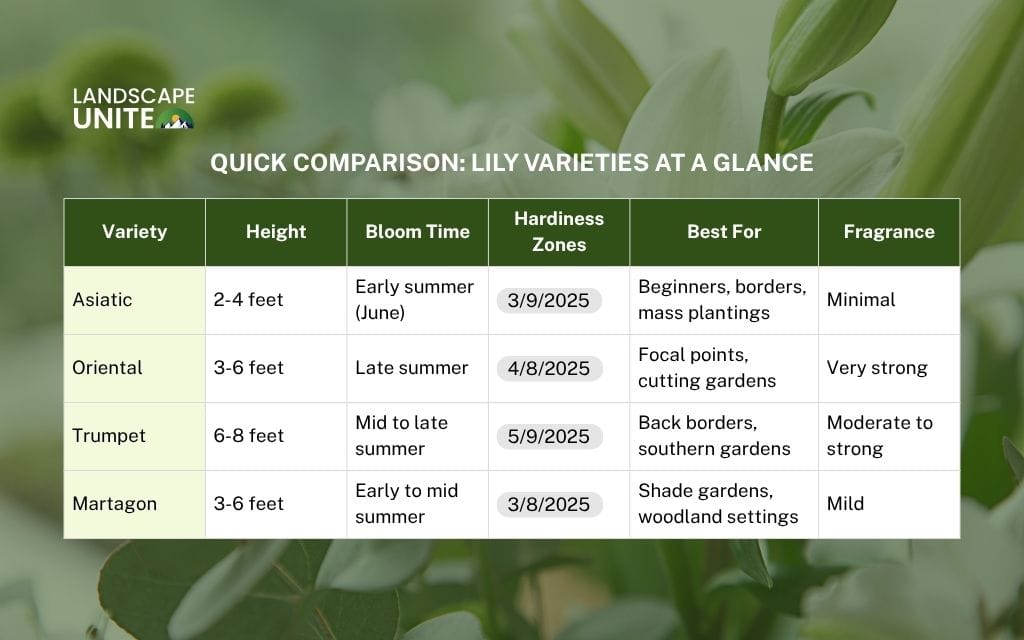
Choosing the right lilies makes all the difference between a struggling garden and one that flourishes. Let’s explore the varieties that consistently deliver outstanding results in flower beds across the country.
Quick comparison: Lily varieties at a glance
| Variety | Height | Bloom Time | Hardiness Zones | Best For | Fragrance |
| Asiatic | 2-4 feet | Early summer (June) | 3-9 | Beginners, borders, mass plantings | Minimal |
| Oriental | 3-6 feet | Late summer | 4-8 | Focal points, cutting gardens | Very strong |
| Trumpet | 6-8 feet | Mid to late summer | 5-9 | Back borders, southern gardens | Moderate to strong |
| Martagon | 3-6 feet | Early to mid summer | 3-8 | Shade gardens, woodland settings | Mild |
Asiatic lilies: The beginner’s best friend
If you’re new to lily gardening, Asiatic lilies should be your starting point. These hardy performers bloom early in the season, typically June, and they’re incredibly forgiving. They tolerate a wide range of growing conditions and rarely give experienced gardeners or beginners much trouble.
Why choose Asiatic lilies:
- Available in virtually every color except true blue
- Compact growth habit perfect for borders
- Excellent disease resistance
- Deer tend to avoid them
- Reliable year-after-year performance
Their 2-4 feet height makes them perfect for mass plantings where you want impact without overwhelming your space. When you’re creating lily flower bed ideas for your property, Asiatics give you confidence that your investment will pay off with beautiful blooms season after season.
Oriental lilies: Fragrant garden showstoppers
Want to add sensory depth to your landscape? Oriental lilies deliver fragrance that can perfume an entire garden area. These late summer bloomers extend your lily season beautifully, offering massive flowers when many other perennials start to fade.
Popular Oriental varieties:
- Stargazer: Upward-facing pink and white blooms, created specifically for cut flower industry
- Casa Blanca: Pure white petals with golden stamens, classic elegance
- Dizzy: Deep burgundy-red with white edges, dramatic presence
The fragrance from these Oriental beauties is so powerful that a small planting near your patio or deck creates an outdoor living space you won’t want to leave. They prefer zones 4-8 and appreciate afternoon shade in hotter climates.
Trumpet lilies: Architectural garden elements
Looking for vertical drama? Trumpet lilies can reach 6-8 feet tall with strong stems that rarely need staking. Their large, trumpet-shaped flowers create architectural interest that’s hard to achieve with other perennials.
Trumpet lily advantages:
- Exceptional height for back-of-border drama
- Superior heat tolerance for southern gardens
- Strong stems need minimal support
- Long-lasting blooms ideal for cutting
- Mid to late summer flowering
When you’re planning landscaping lilies for maximum impact, these varieties deliver presence that transforms ordinary beds into extraordinary garden features.
Specialty lilies worth knowing
Martagon lilies deserve special mention for shade gardens. These woodland natives feature distinctive downward-facing flowers with recurved petals. They’re perfect for naturalizing under trees or in dappled shade where other lilies struggle.
Interestingly, Martagon lilies can take 2-7 years to bloom from seed, exhibiting what botanists call “delayed germination.” But once established, these long-lived perennials can bloom for decades, making them valuable additions to mature landscapes.
Creative lily garden ideas design you must know
The best lily garden ideas balance aesthetics with practical considerations. Let’s explore design approaches that help your lilies look their absolute best.
Cottage garden lily borders
There’s something irresistibly charming about cottage gardens with their informal, abundant plantings. Lilies fit perfectly into this romantic style, especially when you pair them thoughtfully with other cottage favorites.
Picture this: tall Oriental lilies rising behind cascading roses, with foxgloves adding vertical accents and delphiniums providing complementary spikes of blue. This layered approach creates depth and visual interest that evolves throughout the season.
The key to successful cottage-style lily garden ideas is mixing heights and bloom times strategically. Plant your lilies in groups of three or five for natural-looking drifts rather than rigid rows. Integrate pathways that invite exploration and add seating areas where you can actually enjoy the fragrance and beauty you’ve created.
Color coordination matters even in informal gardens. Warm-toned lilies (yellows, oranges, reds) create energetic displays, while cool tones (whites, pinks, purples) evoke tranquility. What flowers go with lilies in cottage gardens? Think peonies, alliums, and old-fashioned perennials that share similar care requirements.
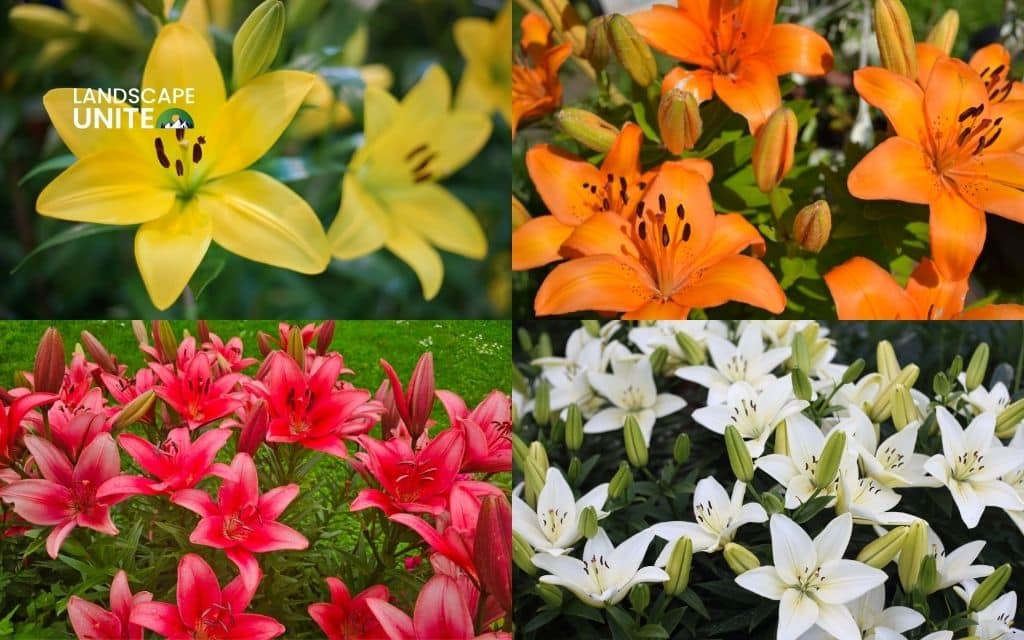
Modern minimalist lily displays
Contemporary landscapes call for a different approach. Clean lines, intentional spacing, and architectural placement create sophisticated lily displays that complement modern homes beautifully.
Monochromatic schemes work exceptionally well in minimalist designs. Imagine pure white lilies like Casa Blanca paired with white-flowering companion plants for lilies such as white catmint or white gaura. This restrained palette creates visual calm while the lily’s dramatic form provides all the interest you need.
Container combinations offer flexibility in modern spaces. Group three or five containers in varying heights, planting each with a single lily variety. Surround them with structural ornamental grasses that echo the lily’s vertical lines while providing contrasting texture.
The beauty of modern lily garden ideas lies in what you leave out as much as what you include. Negative space becomes an active design element, allowing each lily to make its statement without competition.
Woodland lily gardens for shade
Not every garden bakes in full sun, and that’s where shade-loving lilies shine. Martagon lilies and certain species lilies thrive in dappled woodland conditions that would discourage their sun-loving cousins.
Creating successful shade lily garden ideas requires understanding moisture management. Woodland soils tend to stay moist longer, which suits lilies as long as drainage remains good. Companion plants for these settings include hostas, ferns, and astilbe, all of which appreciate similar conditions and provide contrasting foliage that makes lily blooms pop.
Natural stone pathways enhance the organic feel of woodland gardens. Curved lines that follow the natural contours of your property feel more authentic than rigid geometric layouts. The goal is creating spaces that feel discovered rather than designed, where lilies appear to have naturalized themselves among the forest floor plantings.
Lily companion planting strategies
Smart companion planting makes good lily gardens great. The right partners enhance your lilies while solving practical challenges like bare soil around tall stems.
Perfect plant partnerships by height
Lilies have a particular growth habit that creates both challenge and opportunity. Their tall stems rise from the ground with little foliage at the base, which can look sparse. Strategic companion planting solves this beautifully while adding seasonal interest.
Low-growing companions (6-12 inches):
- Coral bells: Colorful foliage from lime green to deep burgundy
- Ajuga: Spreads to fill gaps without aggressive competition
- Sweet woodruff: Thrives in partial shade with pleasant fragrance
- Creeping thyme: Drought-tolerant ground cover with tiny blooms
- Lamium: Variegated foliage for shade areas
Mid-height partners (12-30 inches):
- Catmint: Blooms for months with blue-purple flowers
- Salvia: Vertical interest in various colors
- Baptisia: Structural presence with nitrogen-fixing benefits
- Hardy geraniums: Long blooming season and attractive foliage
- Coreopsis: Cheerful yellow blooms throughout summer
Tall backgrounds (4-6 feet):
- Delphiniums: Classic cottage garden spikes
- Hollyhocks: Vertical accents in various colors
- Joe Pye weed: Late season blooms attract butterflies
- Tall phlox: Fragrant flowers in pink, white, purple
- Perennial sunflowers: Bold late summer color
Seasonal interest additions:
- Spring: Daffodils, tulips, bleeding heart
- Fall: Asters, sedum, ornamental grasses
Color coordination made simple
Color relationships significantly impact how your lily garden ideas photograph and feel in person. Here are proven combinations that work beautifully.
| Color Scheme | Lily Colors | Companion Suggestions | Best For |
| Monochromatic | All white | White catmint, white gaura, artemisia | Formal gardens, evening gardens |
| Complementary | Orange | Purple salvia, purple catmint, lavender | Bold, dramatic displays |
| Complementary | Yellow | Purple alliums, blue delphiniums | High energy borders |
| Analogous | Peach-pink | Coral roses, soft yellow daylilies | Romantic cottage gardens |
| Analogous | Pink-purple | Magenta phlox, lavender catmint | Harmonious flow |
| Universal anchor | White | Literally any color combination | Breathing room, versatility |
Quick color planning tips:
- Use white lilies to calm busy color combinations
- Group warm colors (reds, oranges, yellows) for energy
- Choose cool colors (blues, purples, whites) for tranquility
- Repeat colors throughout the bed for cohesion
- Limit your palette to 3-4 main colors for polish
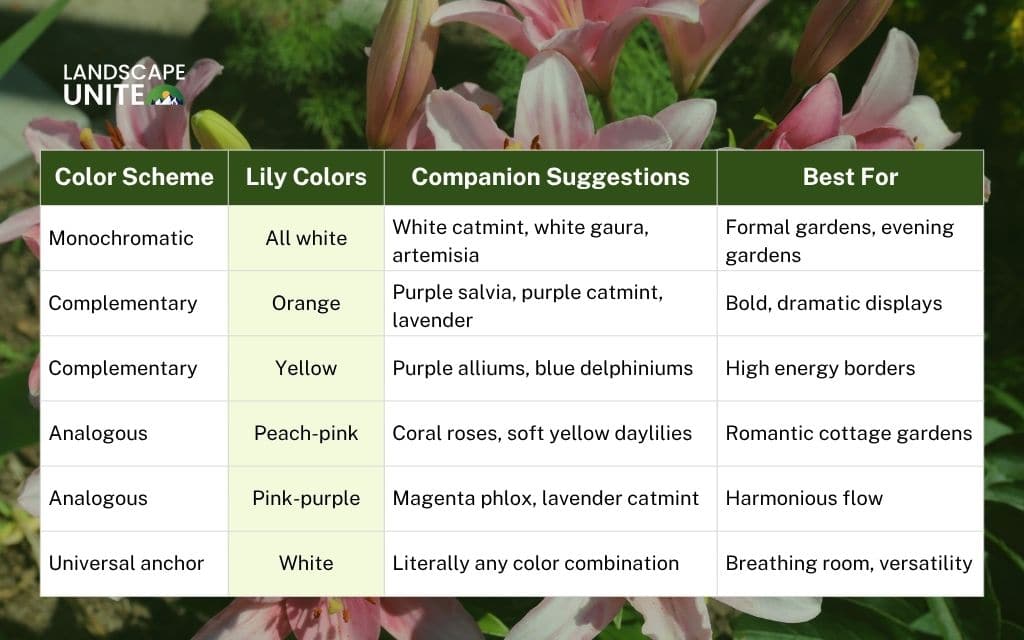
Seasonal lily garden planning
Successful lily gardens don’t happen by accident. They result from thoughtful planning and timely actions throughout the year.
Spring preparation and planting checklist
Spring offers your first opportunity to set your lily garden ideas in motion. As soon as soil becomes workable, you can plant lily bulbs for summer blooms. Fall planting is actually ideal because it allows better root development, but spring planting works well too.
Early spring tasks (March-April):
- Test soil drainage by filling a 12-inch hole with water
- Amend heavy soils with compost and coarse sand
- Remove winter mulch as temperatures warm
- Mark existing lily locations to avoid accidental damage
- Order bulbs from reputable suppliers if planting now
Planting time tasks (April-May):
- Plant lily bulbs 6-8 inches deep (Madonna lilies only 1-2 inches)
- Space bulbs 12-18 inches apart for good air circulation
- Add companion plants: bleeding heart, brunnera, spring bulbs
- Apply 2-3 inches of organic mulch around emerging shoots
- Water thoroughly after planting
Soil drainage quick test: Dig a hole one foot deep and fill it with water. If water remains after 24 hours, your drainage needs improvement before planting lilies.
Summer care and maintenance checklist
Summer is showtime for most lily varieties, and proper maintenance keeps displays looking their best.
Weekly summer tasks (June-August):
- Deep water 1-1.5 inches per week (including rainfall)
- Inspect for lily beetles and larvae
- Deadhead spent blooms, leaving stems and foliage
- Check soil moisture 2-3 inches deep
- Monitor for signs of disease or stress
Monthly summer tasks:
- Apply balanced fertilizer at half strength
- Refresh mulch if it has decomposed significantly
- Stake tall varieties before they reach full height
- Take photos to document what works for future planning
Important watering rules:
- Water early in the day so foliage dries before evening
- Deep watering beats frequent shallow watering
- Focus water at soil level, not on foliage
- Increase frequency during bud formation and flowering
Fall and winter garden care checklist
Fall presents perfect timing for expanding your lily plantings and preparing existing beds for next season.
Fall tasks (September-October):
- Plant new lily bulbs for next year’s best blooms
- Divide crowded lily clumps every 3-4 years
- Continue watering until ground freezes
- Remove weeds before they set seed
- Apply balanced fertilizer to feed bulbs for winter storage
Late fall tasks (November):
- Leave lily stems standing to mark bulb locations
- Apply extra mulch in zones 5 and colder after ground freezes
- Clean and store garden tools and stakes
- Order spring-blooming companions for next year
- Review season photos and plan improvements
Winter tasks (December-February):
- Browse catalogs for new varieties to try
- Sketch garden layout changes on paper
- Research new lily garden ideas online
- Plan companion plant additions
- Order bulbs early for best selection
Division timing guide: Lift and divide lily bulbs when foliage has yellowed but stems are still visible. Separate bulbs gently, replant immediately at proper depth, and water thoroughly.
Solving common lily garden challenges
Even the best-planned lily gardens face occasional challenges. Here’s how to overcome the most common issues.
Drainage solutions for heavy soils
Poor drainage kills more lilies than any other factor. If your soil stays soggy after rain, you have options beyond giving up on lily garden ideas altogether.
Raised beds offer the most reliable drainage solution. Building beds 8-12 inches high immediately improves drainage while creating distinct garden zones with visual appeal. Use rot-resistant lumber, stone, or composite materials for borders.
Soil amendment helps but requires significant effort in clay soils. Work in 3-4 inches of coarse sand and an equal amount of compost, digging to a depth of 12-15 inches. This creates a zone where lily roots can thrive despite surrounding heavy soil.
French drains provide professional-grade solutions for seriously problematic areas. While installation requires more work, they channel excess water away from planting beds permanently. This makes sense when you’re investing in extensive lily plantings or when poor drainage affects your entire landscape.
Container alternatives let you grow stunning lily displays even when in-ground options won’t work. Choose containers at least 12-16 inches deep with drainage holes. Use quality potting mix formulated for containers, never garden soil. This approach works beautifully for patios, decks, and urban settings where ground planting isn’t feasible.
Managing lily beetles and pests
Few things frustrate gardeners more than discovering lily beetles destroying their carefully tended plants. These bright red insects, about 1/4 inch long, along with their disgusting larvae, can defoliate lilies rapidly if left unchecked.
Early detection is everything. Inspect your lilies weekly starting in early spring. Look for adult beetles on leaves and stems, black excrement-covered larvae on leaf undersides, and characteristic irregular holes in foliage.
Hand-picking remains the most effective organic control for small gardens. Check plants in early morning when beetles are sluggish. Drop them into soapy water rather than crushing them, as they drop to the ground and hide when disturbed.
Neem oil spray controls larvae effectively when applied thoroughly to leaf undersides where they feed. Reapply after rain and follow label directions carefully. Beneficial insects like parasitic wasps also help control lily beetle populations naturally.
Some companion plants for calla lilies and true lilies may deter beetles, though evidence is mixed. Aromatic herbs like thyme, oregano, and garlic planted nearby might reduce pest pressure. Encouraging biodiversity in your garden by including various flowering plants attracts beneficial insects that help maintain natural balance.
Physical barriers work for high-value plantings. Floating row covers prevent beetles from reaching plants but require removal for aesthetic reasons once lilies bloom. This approach makes sense for young plantings you’re establishing.
Seasonal monitoring schedules keep you ahead of problems. Mark your calendar for weekly checks from April through August. Fifteen minutes of inspection prevents hours of remediation later.
Lily garden ideas by location
Where you plant lilies dramatically affects design possibilities and maintenance requirements. Let’s explore location-specific approaches.
Front yard lily landscaping
Your front yard creates first impressions, and well-designed lily garden ideas significantly boost curb appeal. The key is choosing varieties and arrangements that look attractive to passing neighbors while remaining manageable from the street.
Lily borders along walkways guide visitors to your entry with fragrance and color. Plant low-growing companions for lilies along path edges, mid-height lilies behind them, and taller backdrop plants against the house. This layered approach creates professional polish.
Driveway plantings soften hardscape and make your entire property more inviting. Asiatic lilies work particularly well here because their compact size won’t obstruct sightlines, and they tolerate road salt better than more sensitive perennials.
Entryway designs benefit from Oriental lilies’ fragrance and presence. Flank your front door with large containers filled with lilies and complementary annuals, or install beds on either side with white Casa Blanca lilies for classic elegance.
Maintenance considerations matter more in front yards because neglect shows immediately to everyone passing by. Choose reliable varieties that perform consistently. Plan flower beds with lilies that look presentable even when not in bloom by including evergreen companions and interesting hardscape elements.
Backyard lily retreats
Your backyard offers more privacy and flexibility for personal lily garden ideas. This is where you can experiment with bold designs and create spaces tailored to how you actually use your outdoor area.
Privacy screens with tall trumpet lilies provide beautiful alternatives to fences or hedges. Plant them in drifts along property lines, mixing in tall grasses and shrubs for year-round screening. This creates living walls that change with the seasons.
Entertainment area integration brings your lily displays into your lifestyle. Position fragrant Oriental lilies near seating areas where you’ll appreciate their perfume during evening gatherings. Create defined garden rooms that transition naturally from patio to planted beds.
Fragrance gardens near decks maximize enjoyment of lily scent. Combine Oriental lilies with other fragrant perennials like peonies and roses. This sensory approach to design makes your outdoor spaces destinations rather than just planted areas.
If you have children or pets, choose lily varieties carefully. While true lilies (Lilium species) are extremely toxic to cats, causing kidney failure even from small exposures, they’re generally safe for dogs and humans. However, calla lilies, which aren’t true lilies, contain calcium oxalate crystals that irritate mouths and digestive systems if chewed. Keep these considerations in mind when planning lily companion plants and garden layouts.
Small space lily solutions
Limited space doesn’t mean limited possibilities. Smart lily garden ideas for compact areas deliver maximum impact from minimal square footage.
Container lily gardens work beautifully on patios, balconies, and small urban yards. Choose dwarf lily varieties or compact Asiatics that reach 2-3 feet maximum. Group containers in odd numbers for visual appeal, and mix flowers like lilies with complementary foliage plants.
Vertical growing techniques multiply your planting area. Wall-mounted planters, trellised containers stacked vertically, and tiered plant stands let you grow multiple lily varieties in the footprint of a single container.
Compact varieties specifically bred for small spaces include Pixie series Asiatics, which max out around 18 inches tall. These deliver full-sized blooms on dwarf plants perfect for border fronts and containers.
Balcony and urban gardening adaptations require attention to wind exposure and weight limits. Secure containers properly, choose heavier pots for stability, and position them where wind damage is less likely. Drip irrigation systems designed for containers solve watering challenges when you travel.
FAQs about lily garden ideas
When is the best time to plant lily bulbs for garden beds?
Fall planting from September through October gives you the strongest first-year blooms because bulbs develop extensive roots before winter. You can also plant in early spring as soon as soil is workable. Both timing options work, but fall planting produces more robust plants. For professional guidance on timing and techniques specific to your landscape, explore more of our planting guides where we address regional considerations and advanced strategies.
How do I choose the right lily varieties for my climate zone?
Match varieties to your USDA hardiness zone for reliable performance. Asiatic lilies handle zones 3-9, making them your most versatile choice. Oriental lilies thrive in zones 4-8, while Trumpet lilies prefer zones 5-9. Check your specific zone and select varieties rated for your area’s temperature extremes. Our team at Landscape Unite shares detailed regional variety guides in our blog to help you make informed decisions.
What companion plants work best with lilies in flower beds?
Low-growing plants like hostas, coral bells, and catmint provide ground cover while letting lily stems shine. Mid-height options include salvia, baptisia, and hardy geraniums. Avoid aggressive spreaders that compete with lily bulbs for space and nutrients. What flowers look good with lilies depends on your color scheme, but roses, peonies, and alliums create classic combinations. Discover more companion planting strategies throughout our blog for detailed plant pairings.
How can I prevent lily beetles from destroying my garden?
Inspect plants weekly during the growing season, hand-pick adult beetles and larvae, and apply neem oil spray for larvae control. Plant diverse gardens that encourage beneficial insects, and consider physical barriers for young plantings. Early detection prevents serious damage, so regular monitoring is essential. For comprehensive pest management plans, connect with landscape professionals who can assess your specific situation.
Do lily gardens require a lot of maintenance throughout the season?
Established lily gardens need surprisingly little maintenance. Plan for weekly watering during dry spells, annual mulching, and deadheading spent blooms. Most tasks take 30 minutes or less weekly. The initial investment in proper soil preparation pays off with years of low-maintenance beauty. Learn time-saving maintenance techniques in our other blog posts about perennial care and seasonal garden management.
Conclusion
You now have a comprehensive foundation for creating stunning lily displays that reflect your personal style and work with your specific growing conditions. The best lily garden ideas start small and expand as you gain confidence.
Begin by selecting 2-3 varieties that match your climate zone and aesthetic preferences. Test them in a small area where you can observe their performance and adjust your approach. Remember, the most beautiful gardens evolve over seasons and years. There’s no pressure to achieve perfection immediately.
Companion plants for lilies will make your displays more complete and visually interesting. Mix heights, textures, and bloom times for gardens that offer something special throughout the growing season. Don’t forget about the unique attributes of these remarkable plants, from their ancient cultivation history spanning over 3,000 years to their fascinating contractile roots that actually pull bulbs deeper into soil for optimal growing conditions.
Your landscape deserves the elegance and drama that lily garden ideas bring. Whether you’re enhancing your front yard’s curb appeal or creating a fragrant backyard retreat, lilies deliver reliable beauty with manageable maintenance.
Your landscape transformation journey starts here. Subscribe today and never miss an opportunity to elevate your outdoor spaces with expert knowledge and inspiring ideas.
